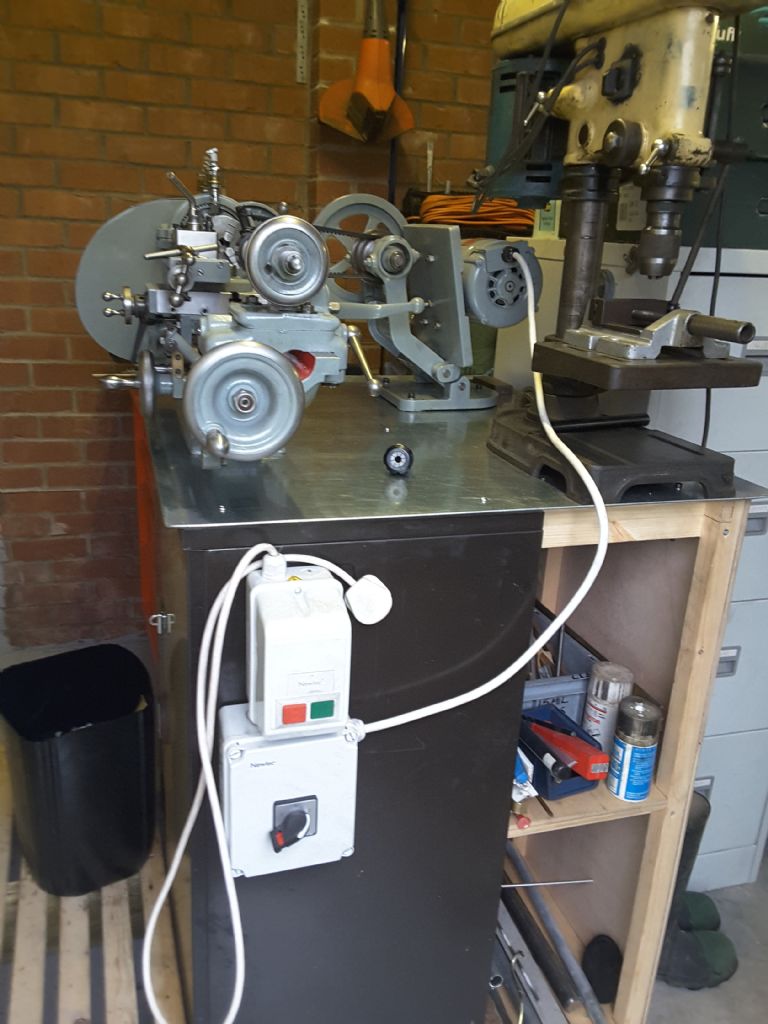All the commercial lathe cabinets suck in practice. Just the degree of suckiness varies. The market won't accept the price performance ratio for good ones.
The Myford effort was, I think, designed by the father of the guy who did the section break removal process in Microsoft Word! I'm unconvinced that he actually topped daddies efforts.
Do yourself a favour and build something that works with decent, accessible, clean storage.
Used proper filing cabinets, Vickers and the other UK makes, are good. Cut down if need be to get the height right, Kitchen worktop is fine for top. Main disadvantage is that the drawers are generally over-deep. I make lift out trays to sit on the half depth sides. Two or three per drawer. If you try to use one full length one getting it out is, ahem, difficult and tends to require verbal encouragement of the unfortunate kind. Especially if well loaded.
Ex kitchen cabinets do well enough if re-worked with square tube or angle in the corners and extra cross braces under the drawers. Splash out on proper full extension slideways and re-work / build drawers to suit your needs. Cabinets can almost always be gotten on "free if you haul" terms from folk doing a refurb, probably not quite so much right now but usually if you need to go a mile its a slow week, so spend money on the bits that matter. Drawers for heavy stuff, chucks, faceplates, steadies et al are best made without sides so you can slide things out rather than lifting directly out of a recess. Junk the standard B&Q et al drawers and make your own, sides off the extra cabinets provide plenty of material to make properly strong drawers.
Much rubbish talked about the need for strong and sturdy stands for small home shop lathes. Strong & sturdy for things like Colchester, Harrison, Smart & Brown and Kerry (for a smaller example) where the stand and machine is a single structure made to be plonked down pretty much anywhere without bending. For small lathes the stand should be weaker than the the lathe bed so there is no possibility of the bed being twisted when very, very carefully bolting down. Plenty of weight and thick, non ringing, sides helps keep the noise down. Its only a support. The old makers knew what they were doing with their simple legs and stiff, drip tray, top. Not a bad idea to spend a bit of time looking at the between the wars factory made old style wooden cabinets with their cupboards and drawers or the modern equivalents made by folk skilled with the brown stuff. Even if you can't match the workmanship you can still steal the style. Not done today 'cos the cabinet would cost at least twice what the machine did.
Whilst you are at it lift the lathe up on proper support blocks. All small lathes suffer from duck syndrome with legs far too short. Lift a Myford at least 2, preferably 4, inches so you can get a slide out tray under to catch most of the swarf and a brush in to get the rest. Rapping the back of your hand on the bottom of the apron or bed whilst wielding a brush gets old fast.
If I had to do one fast adequately effective and within a budget stretch I'd get two of the narrow mechanics drawer sets from the likes of US Pro **LINK** , put one at each end and span the gap with a bit of worktop. Heck even one at headstock end and legs at the tailstock would do for now. The more economy suppliers may well be just as good but I have a US Pro one hanging off the side of my 40" Snap On box so I know its decent quality, albeit sub Snap On. Some of the ultra cheapies re-define flimsy.
Clive
duncan webster 1.





